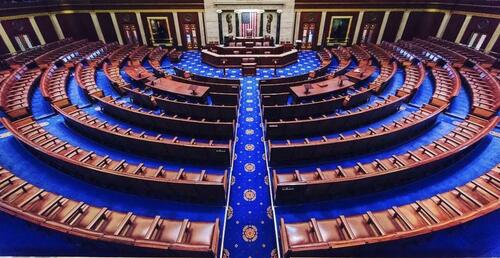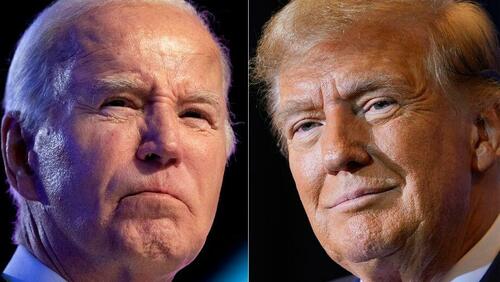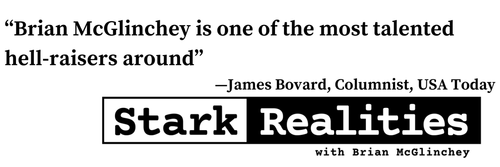Gaps In Electoral College Tiebreaker Rules Could Bring Constitutional Crisis
By Brian McGlinchey at Stark Realities
While many Americans know that an Electoral College tie sends presidential and vice presidential elections into the House of Representatives and Senate, few realize there’s a constitutional crisis lurking in the incomplete rules for resolving such draws.
In 2024, scrutiny of these hidden dangers is more than a mere academic exercise, as there are plausible scenarios by which Joe Biden and Donald Trump could end up with 269 electoral votes apiece. One, for example, centers on Trump winning Nevada, Pennsylvania, Michigan and Wisconsin, and Biden winning Georgia, North Carolina and Arizona.
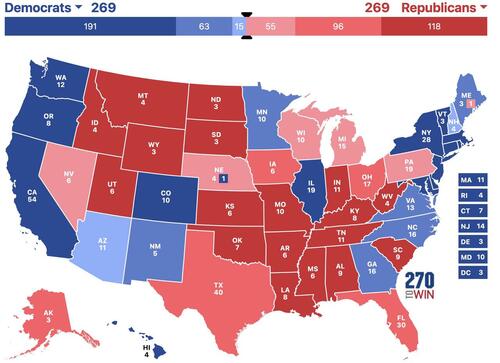
In the event neither candidate reaches the requisite 270 electoral votes, Americans would witness the first “contingent election” in 100 years. In accordance with the 12th Amendment, the president would be chosen by the House of Representatives, and the vice-president by the Senate. In both chambers, votes would be cast by the newly-elected Congress that first convenes in January.
That top-level description — which is about all you typically get from most media references to the possibility —is deceptively simplistic. In practice, a contingent election would be far messier than most Americans realize, with the potential for a deadlock that leaves the Oval Office unattended.
“Unsettled legal and procedural questions permeate nearly every aspect of the process,” wrote Beau Tremitiere and Aisha Woodward at Lawfare, “and in today’s political environment, high-stakes legal disputes and constitutional hardball would be inevitable.”
Before we look at the lurking risks to an orderly transfer of power, let’s quickly review some contingent-election basics. In the House, presidential votes are cast not by individual representatives, but by state delegations, with each state having a single vote. The House chooses from the top three Electoral College vote-getters; of course, in most years, only the two major-party candidates receive any. Winning requires the votes of 26 states.
As of today, Republicans control 26 House delegations compared to the Democrats’ 22, while the North Carolina and Minnesota delegations are evenly split among the two parties. However, since the votes would be cast by the victors of the November election, the delegation-control math could be different when the 119th Congress is gaveled into existence at noon on Jan. 3.
If the House vote for president results in a tie, the state delegations keep on voting until there’s a winner. If that hasn’t happened by Inauguration Day — January 20, 2025 — the new vice president becomes acting president until a candidate gets 26 votes in the House.
Things work a little differently in the Senate. Unlike the House’s state-delegation approach, individual senators cast their own vote for vice president. Rather than the top three electoral-vote finishers, senators pick among the top two. Counting independents who caucus with the Democrats, the Democrats currently control the Senate by a slim 51-49 margin, but face an uphill climb to retain a majority in January.
Here’s where we encounter a major gap in the contingent-election rules: While the 12th Amendment spells out what to do if the House is deadlocked on Inauguration Day, it fails to address the same possibility in the Senate.
The vice president is also president of the Senate. During ordinary business, vice presidents are summoned to cast tie-breaking votes. Some suggest that, since Kamala Harris would be vice president during the contingent election, she would simply cast a tiebreaking vote — for herself.
However, the 12th Amendment stipulates that “a majority of the whole number [of Senators] shall be necessary to make a choice [of vice president].” Some scholars argue that this rules out a tiebreaking vote being cast by the vice president, who is, strictly speaking, not a “senator.”
The most concerning scenario would arise if both the House and Senate are deadlocked on Jan. 20. If that happens, some say the new president should be selected using the Presidential Succession Act of 1947. That’s the law that provides a line of succession that proceeds from vice president to speaker of the house, president pro tempore of the Senate, and then through the cabinet secretaries in order of their departments’ founding date, with State coming first.
Not everyone agrees on that solution. “The Succession Act does not clearly apply to a failure by the House to elect a President or the Senate a Vice President by the time the new terms of those officers begin,” wrote William Josephson in the Journal of Constitutional Law.
According to its language, the Succession Act applies to the absence of a president “by reason of death, resignation, removal from office, inability, or failure to qualify.” That last term seemingly refers to constitutional qualifications for office — such as being 35 years old and a natural citizen — and not the failure of any candidate to receive the requisite number of electoral votes or contingent-election votes.
On top of that, it’s been argued that the Succession Act’s inclusion of the House speaker and Senate president pro tempore in the succession sequence violates the Constitution. “The best reading of the Constitution’s text, history, and structure excludes federal legislators from the line of presidential succession,” wrote Akhil Reed Amar and Vikram David Amar in the Stanford Law Review.
Even if the Succession Act were to be applied, Americans may be surprised by who ends up serving as interim president. The House speaker would almost certainly refuse the opportunity to ascend. Given politicians’ huge appetites for power, that’s counterintuitive — but not when you consider that, under the Succession Act, the speaker becomes president only “upon his resignation as speaker and as representative in Congress.”
Knowing the House could sort out the contingent-election impasse in short order, most speakers would recoil at the idea of tossing away not only the speakership but even their seat. If the Senate president pro tempore likewise refused, that could lead to a President Antony Blinken as an interim solution. Again, that’s only based on the highly dubious assumption that the Succession Act covers a tied-election scenario.
Partisan Procedural Warfare
As if gaps in the basic rules of a contingent election weren’t enough, the process would also be subject to delays and breakdowns arising from parliamentary gamesmanship.
As many more Americans now know — thanks to what happened last time around — Jan. 6 is the legally-prescribed date on which Congress counts electoral votes submitted by the states. If there’s a tie, the 12th Amendment says the House must “choose immediately, by ballot, the President.”
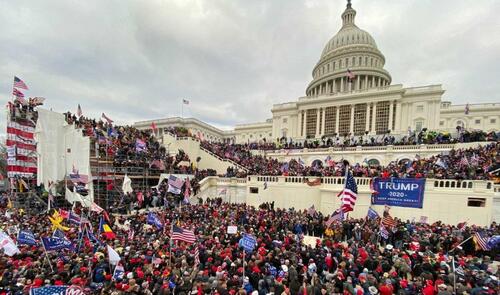
Like so many other words in Washington, “immediately” can’t be taken at face value. Since Congress has never gotten around to passing a law spelling out how contingent elections are to be administered, the House would first need to adopt a set of rules for the process. The majority party as of January 2025 would be incentivized to force rules that favor its candidate.
To give one example of how the rules could be tailored to one party’s benefit, note that the 12th Amendment doesn’t stipulate how the House’s individual state delegations conduct their votes, or whether the state’s decision must spring from a plurality, simple majority or supermajority of the delegation.
Different procedural machinations could unfold as the Senate carries out its vice presidential election. Under Senate rules, ending debate and moving to a vote requires the consent of 60 senators — but it’s unlikely either party will have that many seats in January, which means the VP vote could be delayed by a filibuster. To break it, the majority party could be compelled to “go nuclear” — changing Senate rules so only a simple majority is needed to cut off debate.
Given the enormous stakes, the majority party could be tempted to use far more extreme tactics. In the House, that could mean expelling or refusing to seat members of state delegations that would otherwise be evenly split among Democrats and Republicans, or those delegations where the chamber’s minority party has a mere one-vote advantage.
As all these controversies and procedural duels play out, the clock will be ticking — and there are just 14 days between Jan. 6 and the Jan. 20 inauguration. Over that short period, any number of high-stakes legal challenges could play out in various courts.
While the prospect of rushed litigation is disconcerting, it may also be wishful thinking. Due to separation-of-powers concerns, the federal judiciary has historically avoided involving itself in what it considers internal congressional disputes. If controversy erupts over how the contingent election is being administered in the House or Senate, there may be no external referee for an aggrieved party to turn to.
In short, if both contests are still unsettled on Inauguration Day, America could conceivably be without a president or vice president and without any final authority on how to name a temporary one.
Potential “Faithless Elector” Mayhem
What seems like a 269-269 tie on Nov. 6 could be resolved in an altogether different and even more controversial way: One or more presidential electors could go rogue when the Electoral College votes on Dec. 17, voting for someone other than the winner of their state’s popular vote.
In 2016, there were a whopping ten such “faithless electors.” Texan Bill Greene, for example, voted for libertarian Ron Paul, who’d made a spirited bid for the GOP nomination. While a 2020 Supreme Court ruling upheld the power of states to impose penalties on faithless electors, many states have no laws barring deviant votes, some states have laws with no penalties, and many states have no provision for canceling deviant votes.
In a less likely but more explosive scenario, rather than breaking a seeming 269-269 tie, faithless electors could instead cause a tie and a contingent election. Keeping in mind that the House chooses from the top three electoral-vote recipients, faithless electors could throw someone other than Biden and Trump into the mix — such as independent candidate Robert F. Kennedy, Jr, or someone else who could end up becoming president as a House compromise candidate.
Americans can debate the likelihood of a 2024 electoral college tie and ensuing contingent-election deadlock. However, until gaps in the Electoral College tiebreaker rules are filled by new federal law and perhaps a constitutional amendment, we’ll keep playing a quadrennial game of chance that could someday result in an unprecedented crisis from which there is no clear exit.
Stark Realities undermines official narratives, demolishes conventional wisdom and exposes fundamental myths across the political spectrum. Read more and subscribe at starkrealities.substack.com
Views expressed in this article are opinions of the author and do not necessarily reflect the views of ZeroHedge.
Tyler Durden Sat, 06/22/2024 – 21:00
Source: https://freedombunker.com/2024/06/22/gaps-in-electoral-college-tiebreaker-rules-could-bring-constitutional-crisis/
Anyone can join.
Anyone can contribute.
Anyone can become informed about their world.
"United We Stand" Click Here To Create Your Personal Citizen Journalist Account Today, Be Sure To Invite Your Friends.
Humic & Fulvic Liquid Trace Mineral Complex
HerbAnomic’s Humic and Fulvic Liquid Trace Mineral Complex is a revolutionary New Humic and Fulvic Acid Complex designed to support your body at the cellular level. Our product has been thoroughly tested by an ISO/IEC Certified Lab for toxins and Heavy metals as well as for trace mineral content. We KNOW we have NO lead, arsenic, mercury, aluminum etc. in our Formula. This Humic & Fulvic Liquid Trace Mineral complex has high trace levels of naturally occurring Humic and Fulvic Acids as well as high trace levels of Zinc, Iron, Magnesium, Molybdenum, Potassium and more. There is a wide range of up to 70 trace minerals which occur naturally in our Complex at varying levels. We Choose to list the 8 substances which occur in higher trace levels on our supplement panel. We don’t claim a high number of minerals as other Humic and Fulvic Supplements do and leave you to guess which elements you’ll be getting. Order Your Humic Fulvic for Your Family by Clicking on this Link , or the Banner Below.
Our Formula is an exceptional value compared to other Humic Fulvic Minerals because...
It’s OXYGENATED
It Always Tests at 9.5+ pH
Preservative and Chemical Free
Allergen Free
Comes From a Pure, Unpolluted, Organic Source
Is an Excellent Source for Trace Minerals
Is From Whole, Prehisoric Plant Based Origin Material With Ionic Minerals and Constituents
Highly Conductive/Full of Extra Electrons
Is a Full Spectrum Complex
Our Humic and Fulvic Liquid Trace Mineral Complex has Minerals, Amino Acids, Poly Electrolytes, Phytochemicals, Polyphenols, Bioflavonoids and Trace Vitamins included with the Humic and Fulvic Acid. Our Source material is high in these constituents, where other manufacturers use inferior materials.
Try Our Humic and Fulvic Liquid Trace Mineral Complex today. Order Yours Today by Following This Link.




